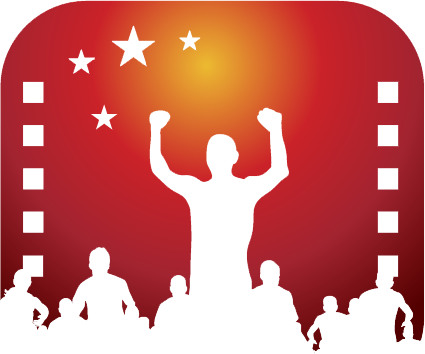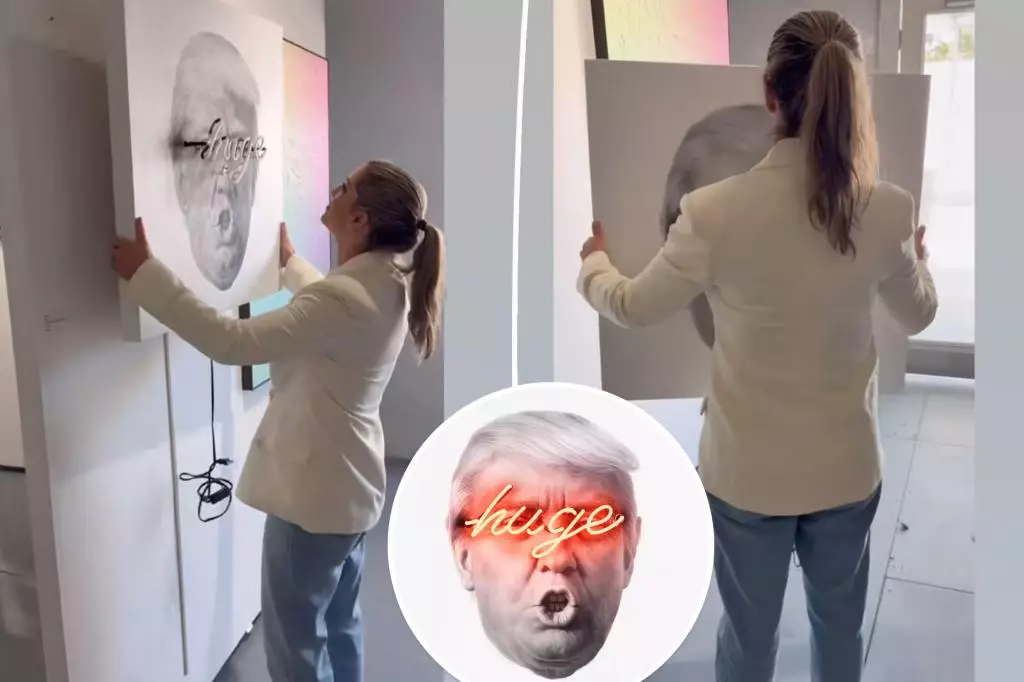The recent events at the Scope Art Show in Miami have ignited a fervent debate about artistic freedom and censorship. A controversial artwork depicting former President Donald Trump’s face was allegedly removed from the event by the fair’s organizers, leading to accusations of censorship by gallery owner Lindsay Kotler of L Kotler Fine Art. The artwork, created by the artist Shyglo, is notable for its photorealistic representation of cultural icons, including both luminaries and controversial figures, aimed at provoking dialogue and thought.
The piece in question, titled “Huge,” features a striking image of Trump’s face emblazoned with the word “huge” lit up in neon. Such a presentation aligns with Shyglo’s artistic signature, merging traditional painting with modern illustrative techniques. However, just hours prior to the event’s opening, Kotler received an abrupt order to remove the piece, igniting discussions about the thresholds of artistic expression within the confines of commercial art shows.
The timing of the removal was particularly disconcerting for Kotler, who claims she was informed at 11:30 p.m. on a Monday night, a mere twelve hours before the fair launched. The abrupt nature of the decision prompted her to label it as censorship, stating, “I’m not an advocate of censorship in art… It’s an expression.” Her strong sentiments highlight a growing concern within the art community about the implications of restricting what can be displayed in public forums, especially at high-profile art fairs that boast an ethos of inclusivity and creativity.
Witnesses observed the chaos surrounding the removal event, with Kotler forced to take down the artwork on opening day, showcasing how fragile the balance between artistic collaboration and organizational control can be. Despite initial ambiguity from fair organizers regarding the reasoning behind the removal, Kotler later learned that the decision stemmed from claims that the artwork was “suggestive.” This raises pivotal questions: who determines what constitutes suggestiveness in art, and at what point does interpretation become suppression?
Art has historically served as a mirror to society, reflecting cultural, political, and social paradigms. Shyglo’s work does not firmly align with a single political stance; rather, it embodies a duality open to interpretation. As pointed out by Kotler, the artwork could be viewed as either a critique or an affectionate nod to Trump, a nuance that exemplifies art’s intricate relationship with personal and collective views. The notion that the piece could inspire conversations—rather than provoke hostility—aligns with the very purpose of art.
Kotler’s assertion that the depicted work is inherently neutral and designed for enjoyment highlights a fundamental aspect of artistic engagement. She emphasizes that the subject matter is not intended to offend but to entertain and perhaps instigate discussion. This raised a critical point: should spaces devoted to artistic expression curate content based on perceived political sensitivity? Such decisions risk undermining art’s role as a platform for divergent viewpoints.
The incident at Scope raises alarming reflections concerning the wider implications of censorship in art, especially in environments that ostensibly champion innovation. Many artists across various backgrounds, regardless of their political alignments, may feel inhibited if their work could face removal due to potential controversies. The fear of censorship can stifle creativity and dissuade artists from exploring challenging or topical subjects.
Additionally, Kotler’s comprehensive representation of diverse artists suggests a commitment to pluralism in art, indicating that art can transcend the binary of political allegiance. By curating pieces that spark dialogue—irrespective of the unique perspectives they embody—galleries can foster an environment conducive to understanding rather than division.
The removal of Shyglo’s portrait of Donald Trump symbolizes a more profound confrontation between art and political sensitivities. The significance of this incident beckons an essential inquiry into how art is navigated in public spaces and the potential repercussions of limiting artistic expression. As the art community grapples with these complex dynamics, it is imperative to uphold the conviction that art should provoke thought and interaction, not be encumbered by the specter of censorship. Conversations surrounding the role and responsibility of art in society must continue, ensuring that diverse voices can persist and thrive, unencumbered by fear.


Leave a Reply